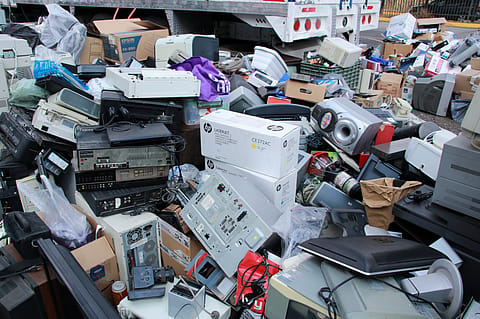India becomes third-largest e-waste generator as tech boom fuels surge
The big growth in e-waste generation in India is fuelled by increased urbanisation, disposable income, and tech adoption over the last decade.

India has emerged as the world’s third-largest generator of e-waste after China and the USA, with 3.8 MMT (million metric tonnes) produced in FY24—a 100% surge over the past decade. The big growth in e-waste generation in India is fuelled by increased urbanisation, disposable income, and tech adoption over the last decade. In value terms, this is worth $6 billion, according to a recent report by Redseer.
China shows the steepest growth trajectory, nearly doubling over the last decade from FY14-24 from 6 to 13 MMT, driven by massive tech adoption and shorter device replacement cycles in its urban population. The USA maintains relatively stable growth due to it being a mature digital market with a high per capita electronics ownership.
E-Waste Landscape in India
E-waste in India is primarily generated through two channels, with households accounting for 70% of the annual total e-waste—primarily led by air conditioners (115,000 tonnes), refrigerators (675,000 tonnes), washing machines (630,000 tonnes), televisions (36,000 tonnes), laptops (10,000 tonnes), and smartphones (35,000 tonnes). Large appliances account for 1.2 MMT, while temperature exchange equipment accounts for 1.3 MMT of e-waste. The remaining 30% comes from businesses, which use refrigerators, water coolers, centralised air conditioners, hot and cold dispensers, industrial printers and copiers, commercial washing machines, lab equipment, professional medical devices, coffee machines, shredders, hand dryers, power tools, servers, desktops, monitors, smartphones, and laptops.
The report says consumer-led e-waste stands at 2.5 MMT in FY24 and is expected to grow at a CAGR of 8-10% over the next decade to 6.5 MMT. Despite a general weight decline, large appliances will account for an increased share of e-waste by FY30 by mass, due to the growing quantity of these items entering the disposal stream. The growth of e-waste between FY19-24 has been driven by the significant adoption of washing machines and televisions between 2008-13, contributing significantly to e-waste. Over time, small appliances like microwaves have become more compact and are now manufactured using lighter materials such as aluminium and steel, replacing the heavier metals such as iron used in older appliances.
As technology evolves, electronic devices have become lighter and more compact. For instance, the shift from bulky CRT TVs to slim LCD and LED TVs has significantly reduced the per-unit weight of e-waste. Many modern electronic devices now use lighter and more efficient materials, such as aluminium and plastics, instead of heavier metals like steel or lead. This change reduces the overall weight and volume of e-waste generated, observes the report.
While 60-70% of e-waste flows through informal channels, making them key collection points, 10-15% of e-waste is largely constituted by smaller consumer electronics such as smartphones, laptops, and accessories. Large household appliances are often traded in when consumers upgrade to newer models.
Recommended Stories
Formal E-Waste Recycling to Grow
The report says India’s current formal system has 595 authorised dismantlers and recyclers with a capacity of 1.8 MMT as of FY24. Formal e-waste recycling is set to grow by 17%, but will cover only 40% of e-waste in a decade.
E-waste marketplaces in India connect e-waste generators with certified recyclers, and a trader/aggregator system is in place. However, only a few players in India have advanced recycling capabilities, like full in-house recycling, high processing capabilities, and efficient infrastructure for rare earth and metal extraction without external help.
Attero, with revenue of Rs 446 crore and a capacity to process 1,44,000 tonnes, is the only player with verified and comprehensive capabilities for Printed Circuit Board (PCB) recycling and precious metal refining. Exigo, Namo, and international players like Cerebra and TES-AMM are the major e-waste recyclers in India.
(INR CR)
Growth constraints for formal players include supply chain bottlenecks, elevated operational costs, strict compliance requirements, market competition from informal players, and fluctuating material prices that strain profitability. Sourcing and logistical inefficiencies limit the availability of high-quality recycling materials for formal players, says the report.